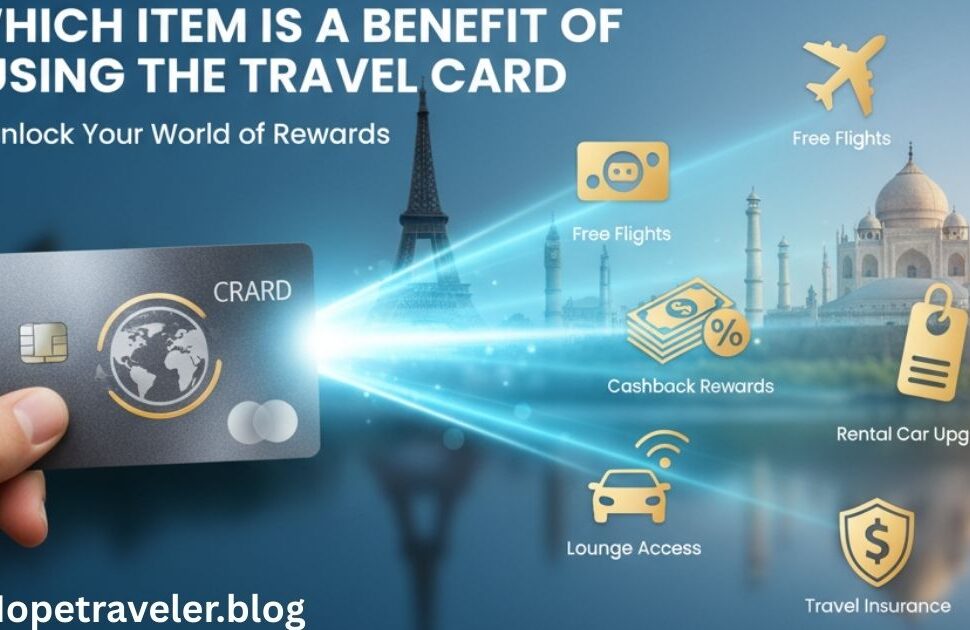Introduction
When it comes to traveling—whether domestically or internationally—managing finances effectively is crucial. Carrying large sums of cash can be risky, while using regular credit or debit cards often leads to high foreign transaction fees. This is where travel cards come into play. Travel cards are financial tools specifically designed for travelers to make payments conveniently, securely, and often at reduced costs while abroad.
In this article, we’ll explore the benefits of using a travel card, why they are preferred over traditional payment methods, how they work, and what to consider before choosing one. If you want a general overview of payment cards, you can refer to Wikipedia’s article on Credit cards, which explains the basics of how these financial instruments work.
What is a Travel Card?
A travel card (also called a forex card or travel credit card) is a card designed for use while traveling, offering features like:
- Multiple currency support
- Lower foreign transaction fees
- Enhanced security features
- Travel-related perks like lounge access and insurance
Travel cards can be:
- Prepaid travel cards (loaded with foreign currency)
- Travel credit cards (offering reward points and travel benefits)
- Debit-based travel cards
They allow users to spend money abroad without worrying about fluctuating currency exchange rates or carrying cash.
Why Are Travel Cards Popular Among Travelers?
Travel cards have gained popularity due to:
- Convenience: Easy payments without cash handling.
- Safety: Reduced risk compared to carrying cash.
- Rewards: Cashback, points, and travel discounts.
- Cost savings: Lower conversion fees and better exchange rates.
Key Benefits of Using a Travel Card
✅ 1. Safety and Security
One of the biggest concerns while traveling is the risk of losing cash or being robbed. A travel card minimizes these risks because:
- You can block the card instantly in case of theft.
- Cards are PIN-protected and come with chip technology.
- Some cards offer fraud protection and zero liability on unauthorized transactions.
✅ 2. Convenient Currency Management
If you’re traveling internationally, managing different currencies can be a hassle. A multi-currency travel card allows you to load multiple currencies on one card, avoiding the need to carry separate wallets for different countries.
✅ 3. Cost-Effective Transactions
Using a regular credit or debit card abroad often incurs:
- Foreign transaction fees (usually 2–3%)
- Dynamic currency conversion charges Travel cards typically offer better exchange rates and lower or zero foreign transaction fees, saving you money.
✅ 4. Rewards and Perks
Many travel credit cards come with:
- Airline miles
- Hotel discounts
- Cashback on international spends
- Free airport lounge access These perks make traveling more affordable and enjoyable.
✅ 5. Fixed Exchange Rates
Prepaid travel cards lock in exchange rates at the time of loading, protecting you from currency fluctuations during your trip.
✅ 6. Emergency Support
Most travel cards come with 24/7 customer support and emergency cash assistance, ensuring you’re never stranded without money.
✅ 7. Easy Tracking of Expenses
Travel cards allow you to monitor your expenses through:
- Mobile apps
- SMS alerts
- Online portals This makes budgeting easier and helps prevent overspending.
✅ 8. Insurance Benefits
Premium travel cards often include:
- Travel insurance
- Lost luggage protection
- Medical emergency coverage These benefits can save you from unexpected expenses during your trip.
✅ 9. Acceptance Worldwide
Travel cards are widely accepted at:
- Hotels
- Restaurants
- Shopping centers
- ATMs This makes them a convenient alternative to cash or traveler’s cheques.
Types of Travel Cards
1. Prepaid Travel Cards
- Load foreign currency in advance.
- Ideal for people who want strict budgeting and no credit risk.
- Often supports multiple currencies on one card.
2. Travel Credit Cards
- Linked to a credit limit.
- Offer reward points, air miles, and cashback.
- Great for frequent travelers who pay off balances monthly.
3. Travel Debit Cards
- Linked to your bank account.
- Safer than carrying cash but less rewarding than credit cards.
How Does a Travel Card Work?
- Load Funds: For prepaid cards, load your card with the desired currency before your trip.
- Use Abroad: Swipe or tap at merchants, withdraw cash from ATMs.
- Track Spending: Use apps or SMS alerts for real-time updates.
- Reload if Needed: Many cards allow online reloading from your bank account.
Travel Card vs Regular Credit/Debit Card
| Feature | Travel Card | Regular Card |
|---|---|---|
| Foreign Fees | Low or zero | 2-3% |
| Currency Option | Multiple currencies | Limited to home currency |
| Rewards | Travel-focused | General rewards |
| Security | High (travel insurance) | Standard |
Clearly, travel cards provide more travel-centric benefits compared to regular payment cards.
Things to Consider Before Choosing a Travel Card
- Currency support: Ensure the card supports the countries you plan to visit.
- Fees: Check for issuance, reloading, and inactivity fees.
- Reload options: Look for easy online reload.
- Exchange rates: Compare rates before loading funds.
- Rewards and perks: Choose a card that aligns with your travel habits.
Common Myths About Travel Cards
Myth 1: Travel cards are expensive
Reality: Many travel cards have low or zero fees, and they save you money on currency conversion.
Myth 2: Regular cards work just fine abroad
Reality: Regular cards may work, but foreign transaction fees and currency conversion rates make them costlier.
Myth 3: Travel cards are hard to get
Reality: Most banks and financial institutions issue travel cards easily.
Tips for Using Travel Cards Wisely
- Carry a backup card in case of loss or technical issues.
- Avoid ATM withdrawals unless necessary (may attract fees).
- Check validity and balance before traveling.
- Enable SMS/email alerts for security.
Real-Life Example: How Travel Cards Save Money
Imagine you’re traveling to Europe for two weeks and plan to spend $3,000. If you use a regular credit card with a 3% foreign transaction fee, you’ll pay an extra $90. A travel card with zero foreign transaction fees eliminates this cost—and often offers better exchange rates.
FAQs About Travel Cards
1. Is a travel card better than cash?
Yes, travel cards are safer and more convenient than carrying large sums of cash.
2. Can I withdraw cash with a travel card?
Yes, but some cards charge ATM withdrawal fees. Check your card’s terms.
3. Do travel cards expire?
Yes, most have an expiration date, usually 3–5 years. Always check before traveling.
The Future of Travel Cards
With the rise of digital wallets, contactless payments, and mobile banking, travel cards are evolving to integrate with mobile apps and virtual payment solutions. However, physical travel cards remain relevant for international travel where digital payment systems are limited.
Conclusion
The benefits of using a travel card are numerous—security, cost savings, convenience, and rewards make them a must-have for frequent travelers. Whether you choose a prepaid travel card or a premium travel credit card, these financial tools simplify payments and help you avoid unnecessary fees.
If you’re planning a trip abroad, getting a travel card should be on your checklist. For general knowledge on financial tools like credit cards, you can read Wikipedia’s Credit card article.




